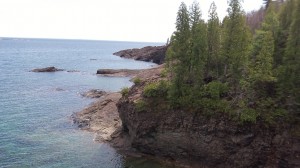Water, water, everywhere but not a drop to drink. It is well known in the survivalist and outdoors community that even freshwater is unfit for human consumption without treatment. Here are some tips and tricks on how we lose water, fighting dehydration, and how to stay hydrated in the bush and under emergency circumstances.
How we lose water per 24 hours
————-minimum—-hot——-heavy exercise
skin——— 350ml——350ml——-350ml
sweating—- 100ml——14000ml—–5000ml
respiration—350ml——350ml——-650ml
urination—– 1400ml—–1200ml——500ml
Defecation— 100ml——100ml——–100ml
——Total– 2,300ml—–3300ml——6600ml
—-————- 2.3L——-3.3L———6.6L
To maximize water uptake: drink no more than 8oz every 15 minutes so your body may absorb the maximum amount (8oz:15min)
SIGNS OF DEHYDRATION
Headache, irritability. Dark yellow urine, thirst, fatigue. Dry or sticky mouth. Low or no urine output. Not producing tears, sunken eyes, lethargic or comatose, vomiting, diarrhea, or a feeling one can’t keep anything down which may cause and/or worsen dehydration itself.
One may notice people becoming confused and doing just stupid things they normally wouldn’t do or others becoming combative and aggitated. This is a good time to make them drink some water as that’s one of the reasons they may be doing this, also they may be low in blood sugar (carrying an “emergency” cola product isn’t too bad of an idea for these instances of low blood sugar, but that’s not enough by itself)
Let’s examine the onset of dehydration:
3% dehydration you are thirsty
5% dehydration you are parched (only 50% grip strength)
7% dehydration you are unconscious
Signs of Water and where to Look
-Water flows down hill
-Grooms the surface of the Earth
-Encourages Vegetation
-Animal trails converge towards water
-Natural caches
-Plants, dew collection, snow, evaporation
-Transpiration
Tips and Tricks for Finding/Purifying Water
Hardwoods may be used to as a source of purified water by boring a quarter to 1/2 inch hole and inserting a hollow reed. Collect the sap on bark, a cup, or any container. This method works in early spring (walnut, maple, birch, hickory). This needs to be done in small amounts or mixed with other purified water as the sugar contents of the sap may make one not used to it sick or stricken with a sudden onset of diarrhea. Diarrhea kills in the bush so it is essential to prevent such a condition. The sycamore tree is one of the few exceptions to the sugar content of the sap. The Sycamore’s sap can be consumed without worry as there is very little to no sugar in the sap.
TRANSPIRATION
Transpiration is the process through which plants respire. What occurs during this process is the release of water vapor through the leafs of the plant. It is advised to use nonpoisonous species for collecting water from transpiration.
One may place a plastic bag, tarp, poncho, etc over the green leafs still attached to a plant. The bag is then sealed off so that no air can get into or out of the bag. A rock is usually placed at the bottom of the bag so that the water will pool. It is best to use a clear bag as this further encourages the transpiration process.
STERILIZATION
Boiling, Chemical treatment, and filtration
Boiling water is an ages old method of sterilizing water. Water should be boiled for a minimum of five minutes though there is argument that most microbes that could cause contamination of humans would die off the moment the water starts boiling. It is better to be safe than sorry. Water containers should be covered when boiling as to prevent the loss of water due to evaporation.
Common household bleach may be used to purify water in a pinch. Do NOT use scented bleach as it poisonous!
2-4 drops of bleach to a liter of water; 2-4 drops/bottle
8 drops per gallon. 16 for dirty water
HOW TO CONSERVE WATER
-Siesta during the day
-Don’t eat if no water is available
-Cover pot when boiling
-Drink limit when possible
-Body can absorb 8oz every 15 minutes
-Breathe through your nose
-Never pee in water
-Drink all kitchen water (i.e. pasta water)


